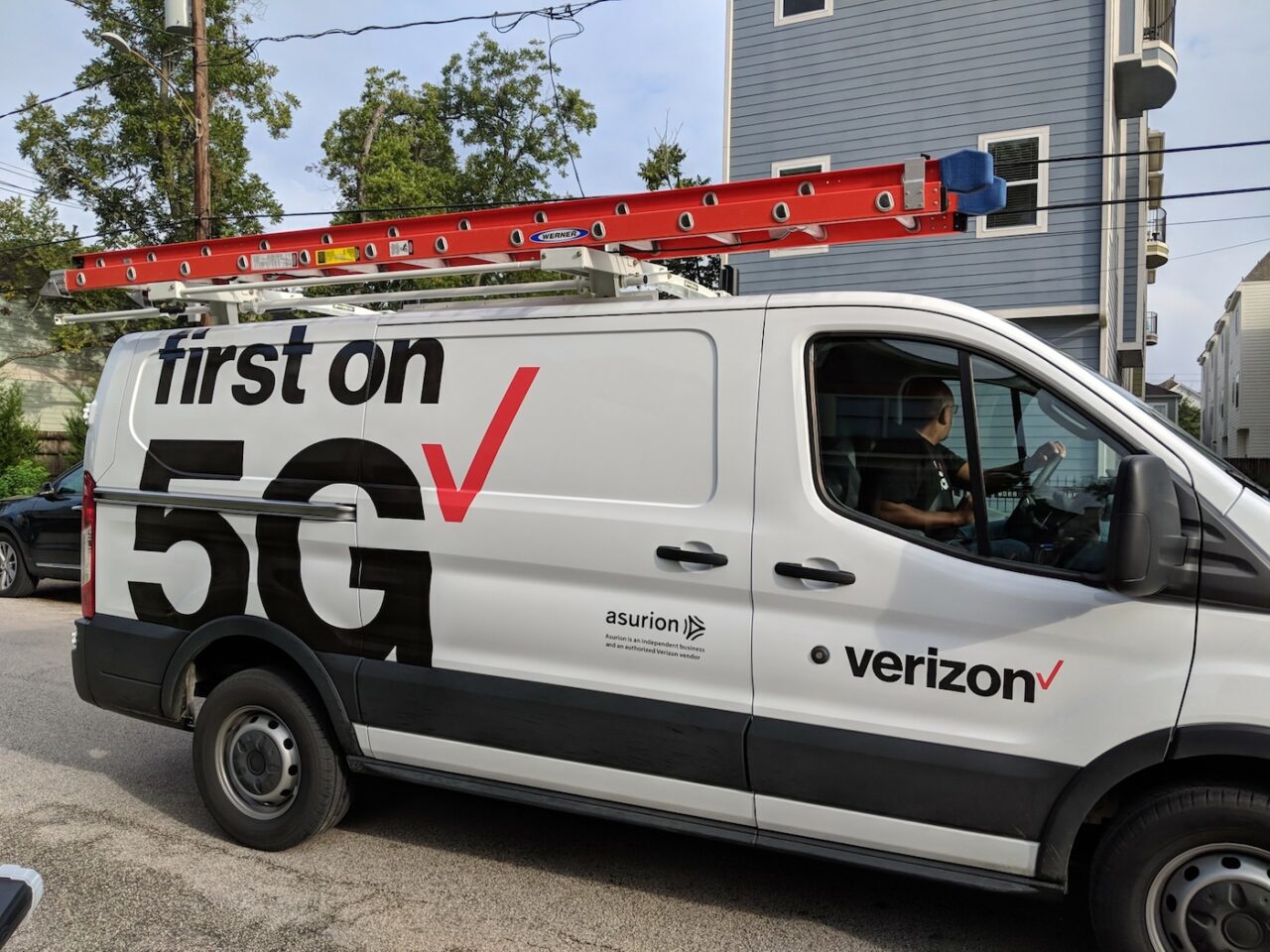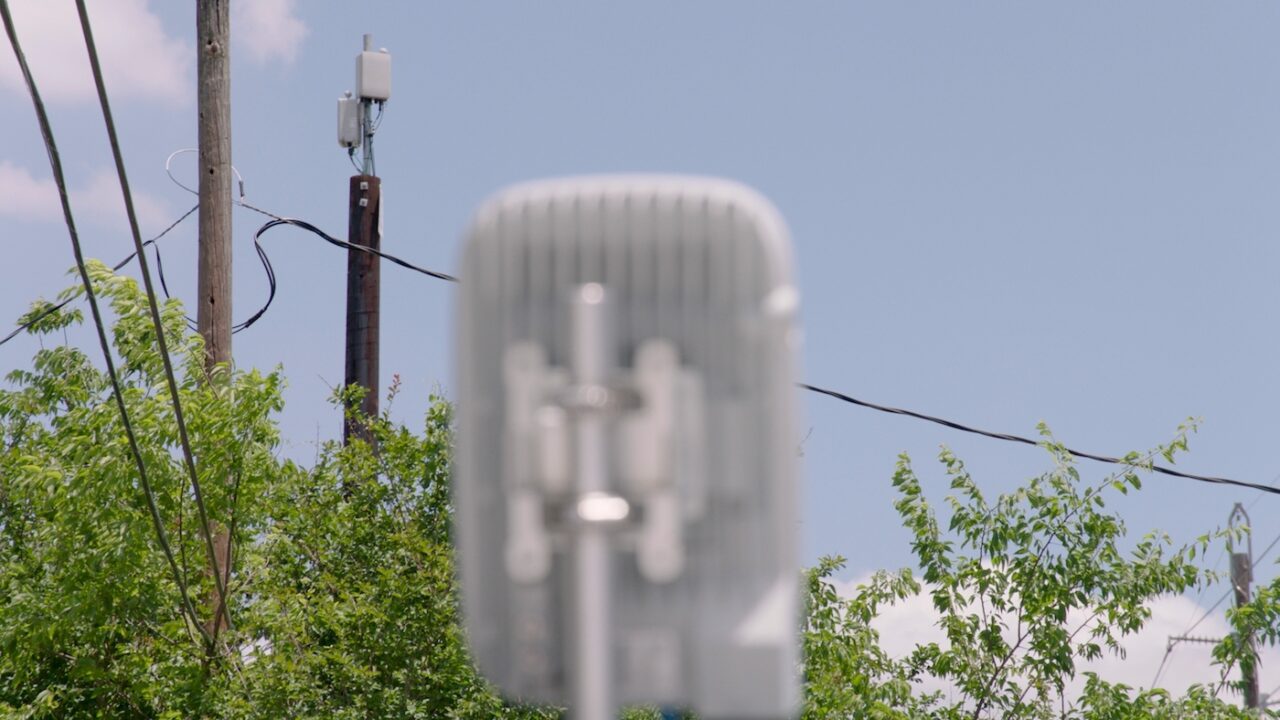Latest C-Band 5G Delay Allows AT&T, Verizon to Address Aircraft Radar Altimeter Concerns


On Jan. 3, AT&T, Verizon, the FAA, and aviation industry leadership reached a new agreement that will delay the launch of C-Band 5G services until Jan. 19. The White House released a statement about the new agreement on Jan. 4, indicating that delay will give both sides enough time to reach a long-term resolution. (Photo: Verizon)
In statements released Monday, AT&T and Verizon agreed to delay their deployment of C-Band 5G wireless networks by another two weeks in an effort to address concerns over potential signal interference issues raised by U.S. aviation regulators and industry executives in recent years.
The latest delay will move the planned Jan. 5 deployment date of the two 5G C-Band services to Jan. 19, with both AT&T and Verizon also agreeing to adhere to operating their networks in a way that will mitigate potential aircraft radar altimeter issues near airports. AT&T and Verizon on Sunday sent a letter in response, rejecting the request for a further delay made by the Department of Transportation in a letter last week, before committing to the postponement in a new agreement.
“At Secretary Buttigieg’s request, we have voluntarily agreed to one additional two-week delay of our deployment of C-Band 5G services. We also remain committed to the six-month protection zone mitigations we outlined in our letter. We know aviation safety and 5G can co-exist and we are confident further collaboration and technical assessment will allay any issues,” an AT&T spokesperson told Avionics International in an emailed statement.
Aircraft radar altimeters operate within 4.2–4.4 GHz, the lower half of which falls within the C-Band—a frequency range from 3.7–4.2 GHz where the combination of the range of signal transmissions and capacity are optimum. The 5G wireless networks scheduled to be switched on by AT&T and Verizon this month will occur within the 3.7–3.98 GHz frequency range, close to the altimeters, which has left aviation industry experts with concerns over signal interference issues.
On modern commercial and military aircraft, radar altimeters are typically affixed to the bottom of the airframe and transmit radio frequency signals to the ground or terrain. The time that it takes for the signal to reach the ground and reflect back up to the aircraft is measured by the altimeter as its height above ground, updated on a regular basis, multiple times per second. Terrain avoidance and warning systems (TAWS), autoland functionality, and cabin pressurization systems also rely on data supplied by altimeters on the majority of modern air transport aircraft.
Last month, the FAA published new airworthiness directives (ADs) that will prohibit certain types of advanced fixed and rotary wing landing procedures that rely on the use of radar altimeter data. The directives, which would have become effective Jan. 5 under the original one-month delay agreed to by AT&T and Verizon, could be subject to change based on the results of collaboration by the two sides during the new two-week delay period.
As the FAA indicated in its Dec. 7 AD, while it has heard concerns from airlines, the FAA, and aircraft OEMs over the potential interference issues posed by the deployment of 5G in the C-Band, it has not yet been presented with data or information that shows altimeters are not susceptible to interference.
A statement published the FAA on Monday includes a letter documenting some of the terms included in the new deal established between the aviation industry and the two companies. Among the requests outlined by the FAA in the deal include a commitment by AT&T and Verizon to continue to work on establishing several long-term mitigation measures that would address potential interference issues posed by C-Band 5G stations located near airports.
One of the key elements of the deal between the two sides is identifying the geographical locations of C-Band 5G ground stations with a more in-depth understanding provided to the aviation industry regarding how the more powerful beam-forming signals of those stations will function within the C-Band spectrum.
Specifically, the agency is requesting “information on base station locations and operating characteristics planned for Q1 2022,” and that AT&T and Verizon “will continue to work with the FAA in good faith to provide it with complete and accurate information on these locations, to include accurate and complete details regarding expected site implementation dates during the quarter as well as accurate operational characteristics of these locations.”

During the new two-week delay, the aviation industry will identify a list of 50 priority airports that will operate in C-Band 5G protection zones where the stations will emit signals at significantly lower levels of power. Pictured here is a Verizon 5G antenna deployed in Houston, Texas.
According to the terms of the new agreement, aviation industry leadership will provide a list of 50 priority airports that will be subjected to the C-Band exclusion zones that were proposed in the Jan. 2 letter sent by AT&T and Verizon to the FAA and Federal Communications Commission (FCC). The letter, sent by John Stankey, the chief executive of AT&T, and Hans Vestberg, Verizon’s chief executive, notes that the perspective of the two wireless network providers is that the 220 megahertz distance between the C-Band 5G service that they will deploy in the future will not present harmful interference issues to aircraft radar altimeters.
The two companies ultimately committed to adopting the type of geographic exclusion zones that have been implemented in France where some C-Band 5G services have already been deployed.
“That approach—which is one of the most conservative in the world—would include extensive exclusion zones around the runways at certain airports. The effect would be to further reduce C -band signal levels by at least 10 times on the runway or during the last mile of final approach and the first mile after takeoff,” the letter, obtained and published by The New York Times, reads.
AT&T and Verizon also note in their letter that they were only made aware of the aviation industry’s concerns from potential C-Band 5G signal interference with aircraft radar altimeters last year. In an emailed statement to Avionics, a representative for the FAA said that the agency had been part of several aviation industry group efforts to work collaboratively with the FCC and wireless network providers on developing the type of mitigation and protection measures they’re currently discussing.
“In 2018, Boeing raised concerns and proposed a solution (see attached). Additionally, ICAO, the aviation arm of the United Nations, identified that any use of the bands near 4.2 to 4.4 GHz should be contingent upon Radio Altimeter Studies,” the representative said. “In 2020 ahead of the auction for 5G C-Band, the FAA again raised concerns and asked for a postponement to collaborate on a solution. The NTIA, the federal government coordinator on spectrum disputes, failed to put the 2020 letter into the FCC’s docket.”
Regarding the adoption of protection zones implemented in France for the use of C-Band 5G near airports, the FAA’s representative said that France uses spectrum for 5G that sits further away—in the 3.6-3.8 GHz range—from the 4.2-4.4 GHz spectrum used by radar altimeters.
Several aviation industry groups released statements acknowledging the new agreement, including Airlines for America (A4A), the Aerospace Industries Association (AIA), and the National Business Aviation Association (NBAA), with NBAA President Ed Bolen committing to serving as a real-time resource on the 5G deployment as more information becomes available.
While the Helicopter Association International (HAI) applauded the agreement, in a statement released Tuesday the group calls for the two sides of the deal to have more consideration for the impact of C-Band 5G deployment on heliports.
“The voluntary measures proposed by the wireless carriers would provide modest 5G limitations at the surface of public-use heliports, of which there are only 55 in the country. That number is dwarfed by the estimated 6,533 to 8,533 [Helicopter Air Ambulance] HAA landing sites in the United States, with more than 4,000 being private-use heliports colocated at hospitals,” the statement from HAI reads. “As regulators spend the next two weeks bridging the gap between the wireless industry’s voluntary measures and what is needed to maintain the safety and usability of the NAS, solutions for helicopter operators must be prioritized.”
The post Latest C-Band 5G Delay Allows AT&T, Verizon to Address Aircraft Radar Altimeter Concerns appeared first on Aviation Today.
—————
Boost Internet Speed–
Free Business Hosting–
Free Email Account–
Dropcatch–
Free Secure Email–
Secure Email–
Cheap VOIP Calls–
Free Hosting–
Boost Inflight Wifi–
Premium Domains–
Free Domains






